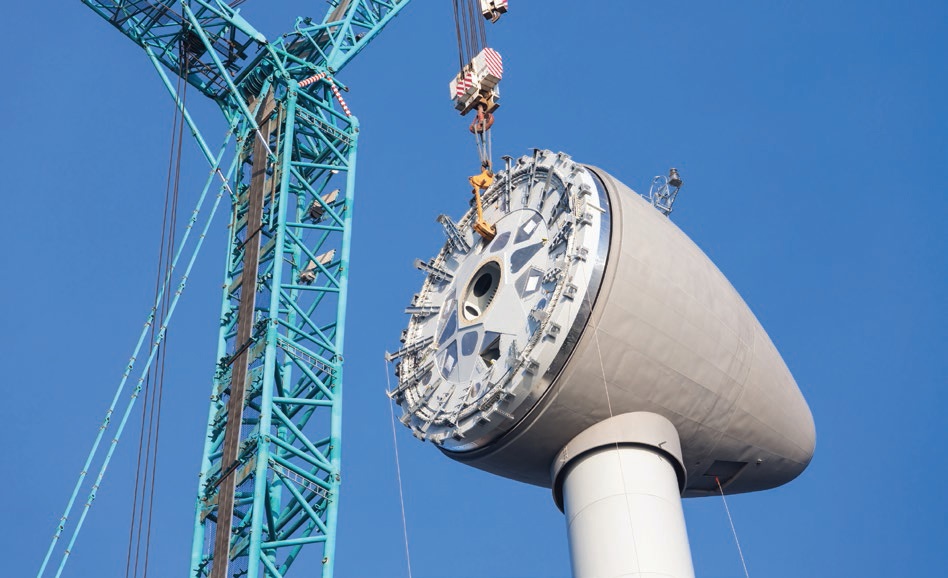The answer, my friend, is blowing in the wind
Dr. Robert M. Gresham, Contributing Editor | TLT Lubrication Fundamentals September 2017
But generating energy from this natural resource will take more than a clever set of lyrics.

© Can Stock Photo Inc. / paulmaguire
STUDENTS OF THE TITLE OF THIS ARTICLE, based on the 1962 Bob Dylan song, know that it originally had to do with rhetorical questions about war, peace and freedom. The implied answer, Dylan tells us, is out there in the wind, but we have to embrace it. But my question has more to do with our current quest for energy, wind energy in particular.
The Organization of the Petroleum Exporting Countries is trying to limit crude production to raise prices—and their revenues. Russia’s only export of note, from a national revenue perspective, is crude oil (not that Russian caviar isn’t important). China, India and Australia are producing crude oil, natural gas, etc., more than ever. And, of course, here in North America the oil shale business is booming due in part to investment by Wall Street. Thus, the actual cost of energy, sans regulatory and tax influences, is lower and more available than I can recall.
So, I ask, what of wind as a source of energy?
In a previous article I cited from the Wall Street Journal (WSJ), it was stated that in order for wind energy to fill just the growth of global energy needs over current demand, we would need to commission a new wind farm the size of Italy every year—not practical long term. One solution is to create
ginormous wind turbines in windy areas off shore. In the U.S. six months ago, we commissioned our first offshore installation, a $300 million dollar project to generate 30-megawatts off the coast of Rhode Island. Europe has been doing this for 20 years in the North Sea.
According to another recent article in the WSJ, author Erin Ailworth (
1) notes that the Rhode Island Block Island wind farm “generates power for 24.4 cents per kilowatt-hour, while offshore wind projects in Europe can come in well under 10 cents per kilowatt-hour.” Further, she states that this market is beginning to attract the interest of such European companies as Denmark’s Dong Energy AS, Norway’s Statoil AS and Spain’s Iberdrola SA.
 For wind energy to fill just the growth of global energy needs over current demand, we would need to commission a new wind farm the size of Italy every year.
For wind energy to fill just the growth of global energy needs over current demand, we would need to commission a new wind farm the size of Italy every year.
© Can Stock Photo Inc. / kruwt
There are 17 wind farms proposed by the American Wind Energy Association. If all were built they would generate 9.1 gigawatts, enough to power three million homes. These projects are primarily concentrated in the northeast. Another incentive and problem for these companies is that no one in the U.S. currently makes turbine towers sizable enough for use in deep waters. Thus, manufacture and shipping becomes an issue.
Regardless, Ailworth notes that Statoil won an auction late last year for the right to build a wind farm 14 miles off the New York coastline. Dong has two proposed projects, one for 15 miles off Martha’s Vineyard and another off the coast of New Jersey. While more state governors are favoring these kinds of projects, there is still a lot of regulatory red tape and community opposition along with the technical problems. These technical problems in the U.S. include how to build a supply chain that can regularly build and ship towers from Europe. Many of the U.S. Atlantic ports are small, and the ships necessary to transport these huge components have to navigate low bridges, busy shipping lanes and hurricane barriers. Nevertheless, these suppliers are confident they can overcome these additional problems.
So it remains to be seen how this all will play out. Will the government continue to subsidize the wind energy program? Can these European companies overcome the technical difficulties in building wind farms at a reasonable profit? Will federal, state and local governments as well as local residents facilitate or impede the growth of these wind farms? Will operators of the wind farms be able to generate electricity at an economical rate such as <10 cents per kilowatt-hour? Will crude oil and gas continue to be abundant and moderately inexpensive?
The answer, my friend, is blowing in the wind.
REFERENCE
1.
Ailworth, E. (2017), “Plans for U.S. Wind Farms Run Into Headwinds.” Available
here.
 Bob Gresham is STLE’s director of professional development. You can reach him at rgresham@stle.org
Bob Gresham is STLE’s director of professional development. You can reach him at rgresham@stle.org.